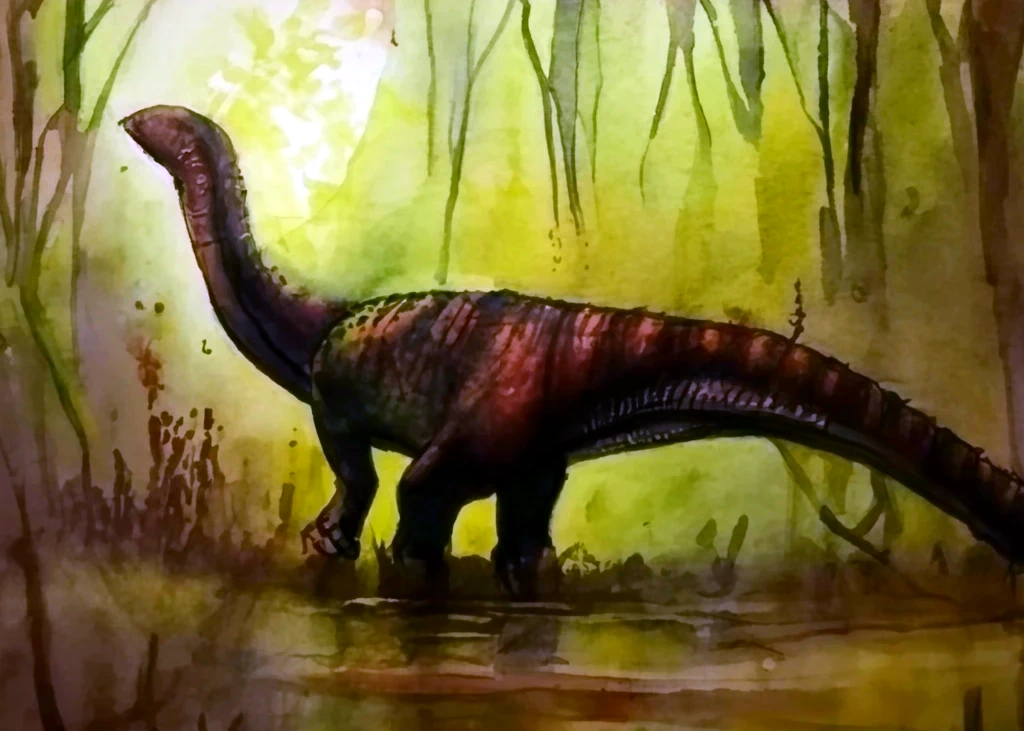
Yimenosaurus in Yunnan
Yimenosaurus (meaning “Yiman reptile”) is an extinct genus of plateosaurid sauropodomorph dinosaur that lived in China in the Early Jurassic. The genus was first named in 1990 by Ziqi Bai, Jie Yang and Guohui Wang, along with its type and only species, Yimenosaurus youngi. The species name honours renowned Chinese paleontologist Yang Zhongjian, the father of Chinese paleontology, known as C.C. Young in English. Known material includes the holotype, an almost complete skull and mandible, as well as incomplete cervical and dorsal vertebrae, a mostly complete sacrum, an ilium, ischia, partial ribs and complete femur, and a paratype, a well-preserved postcrania with a fragmentary skull.
Discovery and naming
Known from two specimens, Yimenosaurus is relatively complete for its type of sauropodomorph. The specimens were described originally in 1990 by Ziqi Bai, Jie Yang and Guohui Wang, and the describers named for them a complete binomial, Yimenosaurus youngi. Bai et al. created the genus name from Yimen county, the place of discovery in Yunnan Province, and the Latin word saurus, meaning “reptile”. For the species, it was chosen to honour Yang Zhongjian, the father and founder of all Chinese paleontology, who was well known for his work on “prosauropods”, and called in English C.C. Young. Of the two specimens, the holotype was chosen, known from a more complete skull. The holotype, YXV 8701, is known from a complete skull and mandibleonly lacking the anterior end of the jaw and minor fragments of bone around the orbit, as well as the postcranial elements of fragmentary cervical and dorsal vertebrae, all sacral vertebrae, an ilium, both ischia, a complete femur, and incomplete and damaged ribs. YXV8702, the paratype, is known from an only incomplete skull, many cervical and dorsal vertebrae, three sacrals, a few caudal vertebrae, a scapula-coracoid, an entire pelvis, and almost both entire hindlimbs.
Discovery and Naming
- Discovery: Fossils of Yimenosaurus were discovered in the Lower Jurassic-aged rock formations of Yimen County, Yunnan Province, China.
- Name Origin: The genus name “Yimenosaurus” is derived from “Yimen,” the county where it was discovered, and “saurus,” meaning lizard in Greek.
Physical Characteristics
- Anatomy: Yimenosaurus is known from relatively complete skeletons, including elements of the skull, vertebrae, ribs, and limbs.
- Size: It was a medium-sized sauropodomorph dinosaur, comparable in size to other early sauropodomorphs, reaching lengths of about 6–8 meters (20–26 feet).
Classification
- Sauropodomorph Dinosaur: Yimenosaurus belongs to the sauropodomorphs, a group of herbivorous dinosaurs characterized by their long necks, long tails, and large bodies.
- Position: It is considered an early sauropodomorph and is closely related to other basal sauropodomorphs from the Early Jurassic period.
Paleoecology
- Habitat: During the Early Jurassic period, Yunnan was characterized by a warm, humid climate with lush vegetation. Yimenosaurus would have inhabited this terrestrial environment.
- Contemporary Fauna: Yimenosaurus coexisted with other dinosaurs such as Lufengosaurus, Xingxiulong, early theropods, and various other herbivorous and carnivorous dinosaurs.
Significance
- Early Sauropodomorph Diversity: Yimenosaurus contributes to our understanding of the early diversification of sauropodomorph dinosaurs. Its discovery in Yunnan expands the geographic range and temporal distribution of early sauropodomorphs.
- Paleontological Importance of Yunnan: The discovery of Yimenosaurus in Yunnan highlights the region’s significance in preserving Early Jurassic dinosaurs. It provides insights into the evolution and ecology of sauropodomorphs during this period.
Yimenosaurus is an important fossil find that adds to our knowledge of sauropodomorph dinosaurs and the ancient ecosystems of Yunnan Province, China.

 7 Days GolfingTour
7 Days GolfingTour
 8 Days Group Tour
8 Days Group Tour
 8 Days Yunnan Tour
8 Days Yunnan Tour
 7 Days Shangri La Hiking
7 Days Shangri La Hiking
 11 Days Yunnan Tour
11 Days Yunnan Tour
 6 Days Yuanyang Terraces
6 Days Yuanyang Terraces
 11 Days Yunnan Tour
11 Days Yunnan Tour
 8 Days South Yunnan
8 Days South Yunnan
 7 Days Tea Tour
7 Days Tea Tour
 8 Days Muslim Tour
8 Days Muslim Tour
 12 Days Self-Driving
12 Days Self-Driving
 4 Days Haba Climbing
4 Days Haba Climbing
 Tiger Leaping Gorge
Tiger Leaping Gorge
 Stone Forest
Stone Forest
 Yunnan-Tibet
Yunnan-Tibet
 Hani Rice Terraces
Hani Rice Terraces
 Kunming
Kunming
 Lijiang
Lijiang
 Shangri-la
Shangri-la
 Dali
Dali
 XishuangBanna
XishuangBanna
 Honghe
Honghe
 Kunming
Kunming
 Lijiang
Lijiang
 Shangri-la
Shangri-la
 Yuanyang Rice Terraces
Yuanyang Rice Terraces
 Nujiang
Nujiang
 XishuangBanna
XishuangBanna
 Spring City Golf
Spring City Golf
 Snow Mountain Golf
Snow Mountain Golf
 Stone Mountain Golf
Stone Mountain Golf















